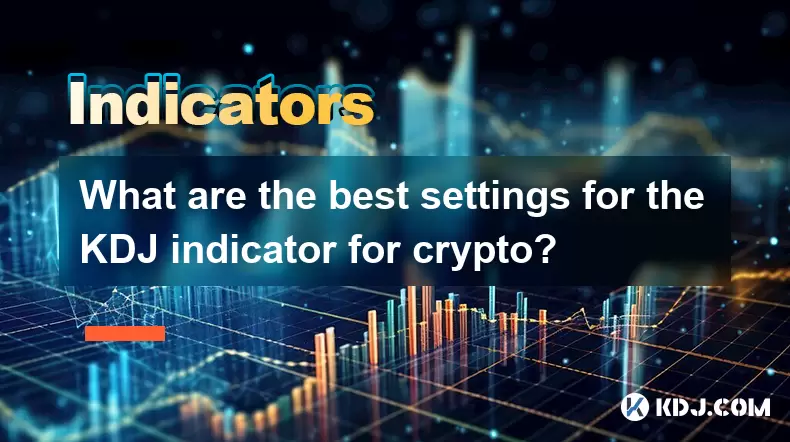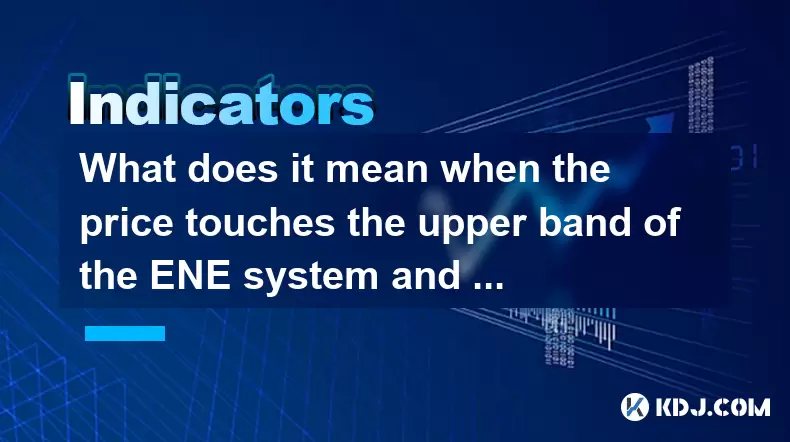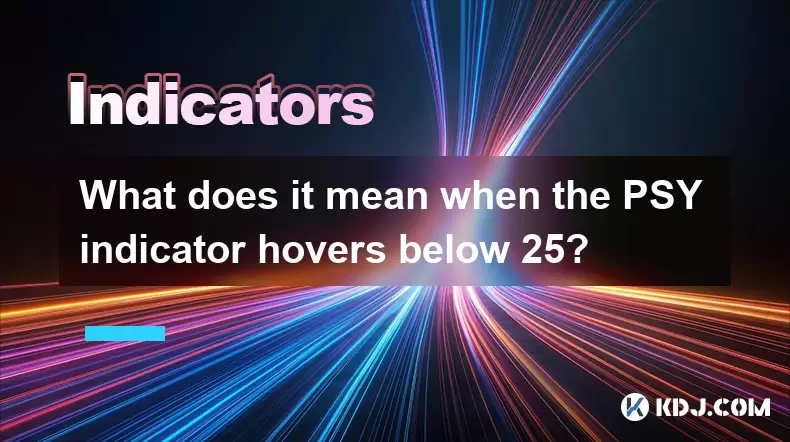-
 Bitcoin
Bitcoin $116700
0.13% -
 Ethereum
Ethereum $4229
5.18% -
 XRP
XRP $3.290
0.28% -
 Tether USDt
Tether USDt $1.000
0.01% -
 BNB
BNB $804.4
1.46% -
 Solana
Solana $181.3
1.92% -
 USDC
USDC $1.000
0.02% -
 Dogecoin
Dogecoin $0.2453
8.11% -
 TRON
TRON $0.3359
-0.82% -
 Cardano
Cardano $0.8187
2.71% -
 Hyperliquid
Hyperliquid $43.56
6.46% -
 Chainlink
Chainlink $21.22
9.48% -
 Stellar
Stellar $0.4533
0.95% -
 Sui
Sui $3.948
2.90% -
 Bitcoin Cash
Bitcoin Cash $571.0
-2.75% -
 Hedera
Hedera $0.2657
1.33% -
 Avalanche
Avalanche $24.32
2.80% -
 Ethena USDe
Ethena USDe $1.001
0.02% -
 Litecoin
Litecoin $122.2
-0.70% -
 Toncoin
Toncoin $3.440
1.95% -
 UNUS SED LEO
UNUS SED LEO $8.978
-0.09% -
 Shiba Inu
Shiba Inu $0.00001385
5.32% -
 Uniswap
Uniswap $10.94
0.24% -
 Polkadot
Polkadot $4.116
3.88% -
 Dai
Dai $1.000
0.00% -
 Pepe
Pepe $0.00001233
5.82% -
 Bitget Token
Bitget Token $4.511
0.53% -
 Cronos
Cronos $0.1572
2.50% -
 Monero
Monero $272.0
-1.82% -
 Ethena
Ethena $0.7563
17.60%
What are the best settings for the KDJ indicator for crypto?
The KDJ indicator enhances crypto trading by identifying overbought/oversold levels, with optimized settings like 14,3,3 for BTC and 7,2,2 for volatile altcoins.
Aug 07, 2025 at 09:04 am

Understanding the KDJ Indicator in Cryptocurrency Trading
The KDJ indicator is a momentum oscillator widely used in technical analysis, particularly in cryptocurrency trading. It expands upon the Stochastic Oscillator by adding a third line, known as the J line, which helps traders identify overbought and oversold conditions more dynamically. The KDJ consists of three components: the %K line (fast stochastic), the %D line (slow stochastic or signal line), and the J line (divergence value). These lines are derived from price data over a specified period and fluctuate between 0 and 100. When applied to crypto markets, which are highly volatile and operate 24/7, choosing the right settings is critical for accurate signals.
Standard KDJ Settings and Their Relevance to Crypto
The default KDJ settings are typically 9, 3, 3, meaning a 9-period %K, a 3-period moving average for %D, and a 3-period smoothing for the J line. In traditional markets, these settings work well for daily charts. However, in the fast-moving crypto environment, these values may generate too many false signals due to extreme volatility. For instance, on a 4-hour or 1-hour chart, a 9-period lookback might be too short to filter out noise. Traders often adjust these parameters to better align with the crypto market’s behavior. A setting like 14, 3, 3 may provide more stability by extending the %K period, reducing the frequency of whipsaws.
Optimizing KDJ for Different Timeframes
Adjusting KDJ settings based on the trading timeframe is essential. On shorter timeframes like 5-minute or 15-minute charts, where price movements are rapid, a setting such as 5, 2, 2 can help capture quick reversals. This configuration increases sensitivity, allowing traders to react faster to momentum shifts. However, it also increases the risk of false crossovers. On longer timeframes such as daily or weekly charts, using 21, 3, 3 can provide more reliable trend confirmation. The extended %K period smooths out volatility, making the signals more trustworthy. For swing traders focusing on 4-hour charts, 11, 3, 3 strikes a balance between responsiveness and reliability.
Customizing KDJ for Specific Cryptocurrencies
Not all cryptocurrencies behave the same way. High-cap assets like Bitcoin (BTC) and Ethereum (ETH) tend to have more predictable patterns compared to low-cap altcoins. For BTC, a setting of 14, 3, 3 on the daily chart can effectively identify major turning points. For more volatile altcoins such as Solana (SOL) or Dogecoin (DOGE), a shorter %K period like 7, 2, 2 may be more suitable to keep up with sudden price swings. It’s crucial to backtest these settings using historical data on platforms like TradingView. To do this:
- Open the chart of the desired cryptocurrency.
- Apply the KDJ indicator from the indicators menu.
- Adjust the parameters in the settings panel.
- Compare the generated signals with past price action to assess accuracy.
This process helps determine which configuration aligns best with the asset’s volatility and trading volume.
Combining KDJ with Other Indicators for Confirmation
Using KDJ in isolation can lead to misleading signals, especially in sideways or choppy markets. To enhance accuracy, traders often combine it with other tools. One effective method is pairing KDJ with the Relative Strength Index (RSI). When both KDJ and RSI show oversold conditions (below 20), it strengthens the case for a potential bullish reversal. Another powerful combination is using KDJ with moving averages. For example, only taking buy signals from KDJ when the price is above the 200-period EMA can filter out counter-trend trades. Additionally, integrating volume analysis helps confirm whether a KDJ crossover is supported by strong buying or selling pressure.
Practical Steps to Configure KDJ on Trading Platforms
Configuring the KDJ indicator correctly on trading platforms ensures optimal performance. On TradingView, follow these steps:
- Click on the "Indicators" button at the top of the chart.
- Search for "KDJ" in the indicator search bar.
- Select the KDJ indicator and click "Add to Chart."
- Click on the indicator name on the chart to open settings.
- Modify the Length (for %K), Smooth K (for %D), and Smooth D (for J) values.
- Choose the price source (typically close).
- Adjust visual settings like line colors and thickness for clarity.
On MetaTrader 4/5, the process involves downloading a custom KDJ script since it’s not built-in. After importing the script:
- Open the "Navigator" panel.
- Find the KDJ indicator under "Custom Indicators."
- Drag and drop it onto the chart.
- Enter the desired parameters in the pop-up window.
- Save the template for future use.
Always ensure the data feed is accurate and the chart timeframe matches your strategy.
Frequently Asked Questions
What does the J line indicate in the KDJ indicator?
The J line represents the divergence between the %K and %D lines, calculated as 3 × %K – 2 × %D. When the J line rises above 100, it suggests overbought conditions with strong bullish momentum. When it falls below 0, it indicates oversold conditions with intense selling pressure. Traders watch for J line extremes to anticipate potential reversals.
Can KDJ be used in ranging versus trending markets?
Yes, but with adjustments. In ranging markets, standard or slightly shortened settings (e.g., 9, 3, 3) work well to catch bounces off support and resistance. In trending markets, traders should avoid counter-trend signals and only act on KDJ crossovers that align with the trend direction, confirmed by tools like moving averages.
How do I know if my KDJ settings are too sensitive?
If your KDJ generates frequent crossovers that don’t result in sustained price movement, it’s likely too sensitive. Signs include multiple false buy/sell signals within a short period. To fix this, increase the %K length (e.g., from 5 to 14) to smooth the lines and reduce noise.
Is KDJ suitable for automated trading bots?
Yes, KDJ can be programmed into trading bots using APIs from platforms like Binance or KuCoin. The key is defining clear rules: for example, “buy when %K crosses above %D below 20 and J < 0.” However, due to lag in extreme volatility, it’s advisable to include filters such as volume thresholds or candlestick patterns to improve reliability.
Disclaimer:info@kdj.com
The information provided is not trading advice. kdj.com does not assume any responsibility for any investments made based on the information provided in this article. Cryptocurrencies are highly volatile and it is highly recommended that you invest with caution after thorough research!
If you believe that the content used on this website infringes your copyright, please contact us immediately (info@kdj.com) and we will delete it promptly.
- Trump, Crypto Vehicle, and WLFI Tokens: A New York Minute on the Latest Buzz
- 2025-08-10 00:30:12
- Wheat Penny Fortune: Unearthing Valuable Coins in Your Pocket Change
- 2025-08-10 00:35:19
- Dogecoin, PENGU, and Remittix: A New York Minute in Crypto
- 2025-08-10 01:10:12
- Ozark AI: Investment Opportunities and Analyst Projections for 2025
- 2025-08-10 01:15:17
- Cryptocurrencies 2025: Top Buys and Market Predictions
- 2025-08-10 01:20:12
- Pendle's Price Jump: Riding the Wave of Market Sentiment
- 2025-08-10 01:25:11
Related knowledge

What does it mean when the price is trading above the SAR indicator but the red dots are densely packed?
Aug 09,2025 at 11:49pm
Understanding the SAR Indicator and Its Visual SignalsThe SAR (Parabolic Stop and Reverse) indicator is a technical analysis tool used primarily to de...

What does it mean when the MACD histogram continues to shorten but the price reaches a new high?
Aug 09,2025 at 09:29pm
Understanding the MACD Histogram and Its ComponentsThe MACD (Moving Average Convergence Divergence) indicator is a widely used technical analysis tool...

What does it mean when the Triple Moving Average (TRIX) turns downward but the price doesn't fall?
Aug 09,2025 at 12:42pm
Understanding the Triple Moving Average (TRIX) IndicatorThe Triple Moving Average, commonly known as TRIX, is a momentum oscillator designed to filter...

What does it mean when the price touches the upper band of the ENE system and then falls back?
Aug 10,2025 at 12:42am
Understanding the ENE Indicator StructureThe ENE (Envelope) indicator is a technical analysis tool used in cryptocurrency trading to identify potentia...

What does it mean when the Williams' oscillator repeatedly hits bottoms but fails to rebound?
Aug 09,2025 at 09:28am
Understanding the Williams %R OscillatorThe Williams %R oscillator, developed by Larry Williams, is a momentum indicator used in technical analysis to...

What does it mean when the PSY indicator hovers below 25?
Aug 10,2025 at 01:14am
Understanding the PSY Indicator in Cryptocurrency TradingThe PSY indicator, also known as the Psychological Line indicator, is a momentum oscillator u...

What does it mean when the price is trading above the SAR indicator but the red dots are densely packed?
Aug 09,2025 at 11:49pm
Understanding the SAR Indicator and Its Visual SignalsThe SAR (Parabolic Stop and Reverse) indicator is a technical analysis tool used primarily to de...

What does it mean when the MACD histogram continues to shorten but the price reaches a new high?
Aug 09,2025 at 09:29pm
Understanding the MACD Histogram and Its ComponentsThe MACD (Moving Average Convergence Divergence) indicator is a widely used technical analysis tool...

What does it mean when the Triple Moving Average (TRIX) turns downward but the price doesn't fall?
Aug 09,2025 at 12:42pm
Understanding the Triple Moving Average (TRIX) IndicatorThe Triple Moving Average, commonly known as TRIX, is a momentum oscillator designed to filter...

What does it mean when the price touches the upper band of the ENE system and then falls back?
Aug 10,2025 at 12:42am
Understanding the ENE Indicator StructureThe ENE (Envelope) indicator is a technical analysis tool used in cryptocurrency trading to identify potentia...

What does it mean when the Williams' oscillator repeatedly hits bottoms but fails to rebound?
Aug 09,2025 at 09:28am
Understanding the Williams %R OscillatorThe Williams %R oscillator, developed by Larry Williams, is a momentum indicator used in technical analysis to...

What does it mean when the PSY indicator hovers below 25?
Aug 10,2025 at 01:14am
Understanding the PSY Indicator in Cryptocurrency TradingThe PSY indicator, also known as the Psychological Line indicator, is a momentum oscillator u...
See all articles

























































































